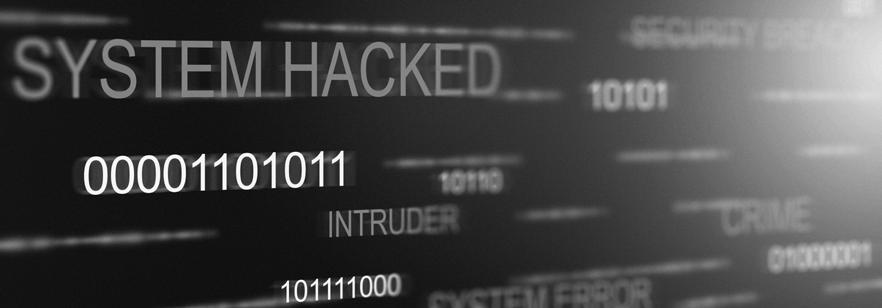
Does
your business spend more on cloud storage than you realise?
Does your business use cloud storage?
That’s storing files and data online instead of on your own computers.
There’s a good chance you’re spending more than you need to be. And the biggest problem isn’t how much space you’re using… it’s the hidden fees.
One of the main culprits is something called egress fees. These are charges you pay when you want to move your data away from your current cloud provider or access it in certain ways. In simple terms, you’re being charged just to use your own data. It’s like paying a fee every time you open your own storage cupboard.
These costs add up quickly. And they’re making it harder for businesses to stay within budget.
Recent research found that almost half of what a company pays for cloud storage goes toward these fees… NOT the actual storage itself.
And the result?
Most businesses end up overspending on their cloud storage plans. Only a small percentage manage to stay under budget.
This pricing model makes it tricky to switch providers even if better or more affordable options are available. That’s why so many businesses stick with their current provider. Not because it’s the best choice, but because it’s too expensive to move.
To keep costs under control, many businesses are now choosing a hybrid approach to storage. That means using a mix of cloud services and local, on-site storage (like servers or hard drives you own). It gives you more flexibility. And it can help you avoid some of those expensive cloud fees.
The key takeaway?
Cloud storage isn’t always as straightforward – or as affordable – as it seems. If you haven’t taken a close look at your cloud costs lately, it’s worth reviewing them.
Understanding where your money is going can help you make smarter decisions and avoid paying for things you don’t need.
Not sure where to start? We can help you make sense of it all and keep your storage spending in check. Get in touch.
adding a new way to block risky devices
Microsoft’s testing a new safety feature in its Defender for Endpoint security software.
It’s designed to spot and block devices that are connected to your network but haven’t been set up properly or aren’t being protected. These “undiscovered” devices are a big risk because hackers can use them to get into your systems without being noticed.
The new feature automatically blocks any data going to or from these devices. Kind of like cutting off a suspicious stranger before they can cause any trouble. If a device gets blocked by mistake, there’ll be a button to undo it.
The feature isn’t live yet, but it’ll be available soon for supported Windows devices.
The famous 6-second Windows 95 startup sound made history. It’s now part of the US Library of Congress. It was chosen for its cultural significance and joins the National Recording Registry alongside other iconic recordings.
Microsoft has an AI “red team” that acts like the bad guys on purpose. They try to break their own systems to find weaknesses before real hackers do. It’s all about staying one step ahead.
Back in 1976, Apple cofounder Ronald Wayne sold his 10% share in the company for just $800 (£600). If he’d held on to it, that slice of Apple would be worth over $200 (£150) billion today. Now that’s a serious case of seller’s regret.

Watch out for a new kind of phishing scam
Cyber criminals have found a way to send fake emails that look almost exactly like the real thing. Right down to the login pages you’re asked to click.
A group nicknamed “Morphing Meerkat” is behind it. They’ve managed to copy the look of more than 100 well-known brands.
Because the emails and web pages match so closely, they’re very hard to spot as fake. You should boost your security settings to make it harder for these scams to get through.
INSPIRATIONAL QUOTE OF THE MONTH
“Work takes on new meaning when you feel you are pointed in the right direction. Otherwise, it’s just a job, and life is too short for that.”
Tim Cook, CEO at Apple.

“I’ve been busy over the last few weeks carrying out IT health checks for a number of local businesses. There’s a recurring theme that I’m finding in all of my reports, which is that an alarming number of business owners are making a lot of incorrect assumptions about the level of security they have in place for their IT systems. Often there is little to no monitoring in place, and it’s only down to luck that these businesses have not experienced a breach.
If you go for a drive in your car, you don’t just rely on the airbag to protect you. You put your seatbelt on (and your car has a bunch of other systems besides the basics, designed to keep you safe). You can think about the IT setup in the same way. Multiple layers of security will give you the best possible protection against cyberattacks – and to keep it all running smoothly, you should work with a reputable IT support company, aka. Managed Service Provider. I will let you know if
I
find a good one

“
New spell check feature for Teams
Tired of making embarrassing typos in Teams messages?
JULIAN’S NEWS UPDATE MICROSOFT
Microsoft’s rolling out an improved spell check for Teams that highlights mistakes as you type and suggests quick fixes. Just like in Word. You can choose a correction, ignore it, or add your own words to the dictionary. It also supports switching between up to three languages (though we don’t yet know which ones).
It’s available now on Windows and Mac.

We hear about security breaches all the time. But it’s easy to think, “That won’t happen to us.”
Unfortunately, the truth is… it could.
And if it does, the costs to your business go far beyond fixing a few systems or paying a fine.
Cyber attacks have become more frequent, more sophisticated, and more damaging.
As more businesses move their data online, rely on cloud services, and encourage remote work, their networks become easier to target.
And attackers know it.
When a business suffers a breach (where someone gains unauthorised access to your data) the immediate impact might include lost revenue, a damaged reputation, or a big regulatory penalty.
But the real damage often appears over time.
Take this in: The average cost of a serious security breach is now estimated at nearly $600 (£450) million. That includes everything from fixing systems, legal fees, lost business, and customer support. It’s a huge jump from just a year ago, and it shows no signs of slowing down.
But it doesn’t stop at finances.
Businesses that are breached often see a drop in customer trust. People may take their business elsewhere, unsure if their data is safe. In some cases, the business’s value drops as investors lose confidence. Even applying for funding or planning future growth becomes harder.
It gets worse in sectors like healthcare or finance, where a breach can delay operations, expose personal records, and cause real harm to people. That kind of disruption can ripple far beyond just the business itself.
The bad news is: Cyber threats aren’t going away.
The good news?
There’s a lot you can do to reduce the risk. A strong security setup, smart employee training, and a plan for how to respond to an attack can make all the difference.
If you’re not sure how protected your business is, don’t wait for something to go wrong. Let us help, starting with a security audit. Get in touch.
Anker PowerConf C200 2K webcam
You know what’s distracting when you’re on a video call?
A poor quality display and background noise.
Lucky for us, Anker has the perfect solution. The PowerConf C200 is a 2k webcam that not only gives you ultra-clear resolution but comes with AI-powered noise cancelling microphones for crisp, clear conversations.
£55.99 from Amazon.
Q: What’s the difference between backing up my data and syncing it?
A: Syncing keeps files up to date across devices. Backup means creating a separate copy in case something goes wrong. You need both to stay safe.
Q: We use Microsoft 365. Does that mean we’re automatically protected from cyber threats?
A: Not quite. Microsoft 365 has some great built-in tools, but you still need extra security layers like backup, security software, and staff training.

Q: How do I know if our Wi-Fi is secure enough?
A: Make sure you’re using a strong password, up-todate hardware, and modern encryption like WPA3. And ALWAYS change the default router settings.
